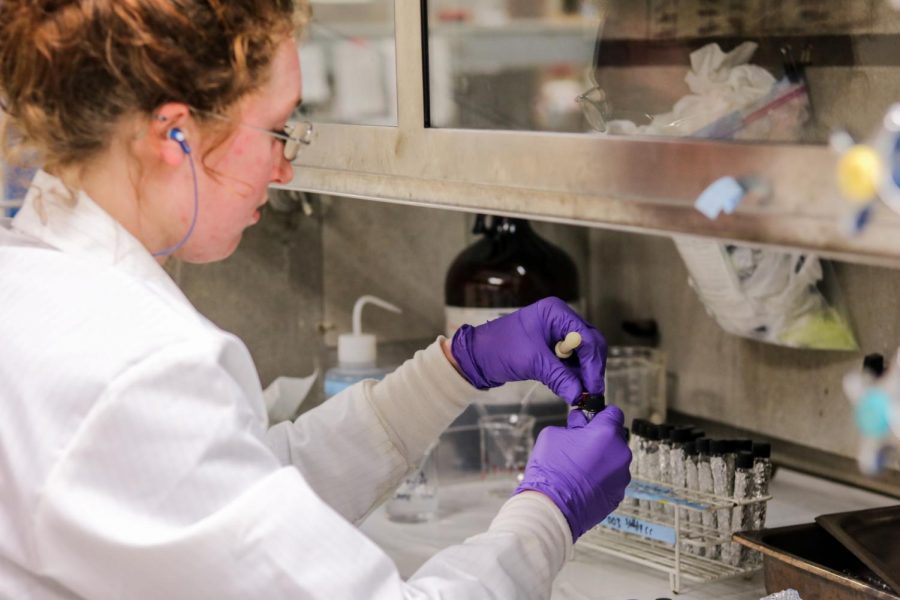Researchers use bands to measure daily chemical exposure
May 20, 2019
A recent study by Oregon State University researchers aims to give new insight into what chemicals are being inhaled and absorbed into the skin on a daily basis, to see if people are unknowingly absorbing potentially harmful compounds.
In 2014, researchers gave 262 silicone wristbands to volunteers from urban and rural communities in North America, Africa, and South America. Extracts from the wristbands were then analyzed to determine which chemicals volunteers had been exposed to. According to Kim Anderson, an OSU professor and leader of the research team, the bands were designed to imitate biological uptake, the process by which substances from the environment are transferred into human bodies.
“It’s meant to mimic our skin cells, so the concept is that what’s in the wristband is a mimic of what’s in ourselves,” Anderson said.
Analysis of the wristbands showed that 191 different types of chemicals were detected in total, and that no two wristbands had identical detections. Exposure ranged from four to 43 unique chemicals on each volunteer. Many chemicals that were found in high frequencies are not commonly researched, so not much is known about them.
According to Anderson, it is not possible to determine the harmful effects of chemicals from this study because the wristbands did not measure amount, only that the chemical was present.
“We have this concept in toxicology that the dose makes the poison,” Anderson said. “While a chemical may be present in your environment, it has to be present at a toxic level [to cause harm].”
Anderson said that the wristbands showed low pesticide exposure, which was the type of chemical many were concerned about. Instead, the wristbands mostly detected fragrance compounds, personal care products, chemicals from industrial processes, and phthalates, which are commonly used in plastics. This study differs from many other studies in that it focused on mixtures of chemicals rather than a single type of chemical.
In over 50 percent of all wristbands, potential endocrine disrupting chemicals were discovered. The human endocrine system releases hormones from glands into blood. Exposure to disrupting chemicals has been linked to negative health effects that include adverse pregnancy and endocrine-related cancer. Phthalates are a potential EDC, as well as flame retardants which were detected in all wristbands except for the ones from Africa. Flame retardant chemicals, often found on furniture, were discovered to a large extent on children.
According to Anderson, though the toxicity of these chemicals could not be determined the study provided information on what chemicals and chemical mixes should be studied to a greater extent.
“The hope was to find chemicals that various people were exposed to that might not be on everyone’s radar,” Anderson said.
Volunteers who wore wristbands in Houston during the time following Hurricane Harvey were found to have the greatest amount of chemical detections. According to Anderson, this is likely because of floods moving contaminants around, particularly when Superfund sites, which contain hazardous materials, were flooded.
Follow up studies with some participants, such as the Hurricane Harvey residents, have already been conducted. Volunteers in Africa were asked to wear another wristband two weeks after the initial study. According to Anderson, the chemical detections from the second wristband were largely identical to the first.
“What we find is that people are pretty consistent with their exposure from one week to the next, but individuals are very different,” Anderson said.
Currently, Anderson is working with a small company to commercialize and sell the wristbands to the general public.










































































































